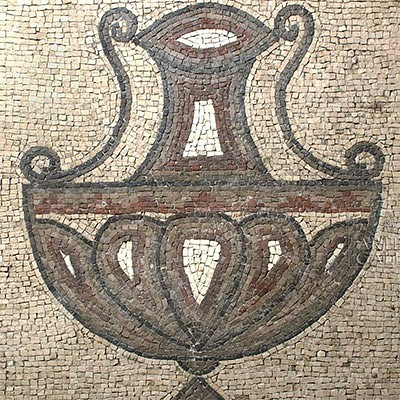Egyptian Millefiori Glass Inlay Fragments (6)
Lot 21
About Seller
Artemis Gallery
686 S Taylor Ave, Ste 106
Louisville, CO 80027
United States
Selling antiquities, ancient and ethnographic art online since 1993, Artemis Gallery specializes in Classical Antiquities (Egyptian, Greek, Roman, Near Eastern), Asian, Pre-Columbian, African / Tribal / Oceanographic art. Our extensive inventory includes pottery, stone, metal, wood, glass and textil...Read more
Categories
Estimate:
$2,000 - $3,000
Absentee vs Live bid
Two ways to bid:
- Leave a max absentee bid and the platform will bid on your behalf up to your maximum bid during the live auction.
- Bid live during the auction and your bids will be submitted real-time to the auctioneer.
Bid Increments
| Price | Bid Increment |
|---|---|
| $0 | $25 |
| $300 | $50 |
| $1,000 | $100 |
| $2,000 | $250 |
| $5,000 | $500 |
| $10,000 | $1,000 |
| $20,000 | $2,500 |
| $50,000 | $5,000 |
| $100,000 | $10,000 |
| $200,000 | $20,000 |
About Auction
By Artemis Gallery
Sep 22, 2020
Set Reminder
2020-09-22 12:00:00
2020-09-22 12:00:00
America/New_York
Bidsquare
Bidsquare : Antiquities - Egypt, Greece, Italy, Near East
https://www.bidsquare.com/auctions/artemis-gallery/antiquities---egypt-greece-italy-near-east-5663
Featuring Egyptian, Greek, Roman, Etruscan & Near Eastern art. If you love the classics, this is the sale for you. All artifacts offered for sale have been legally acquired, are legal to sell and are guaranteed to be as described. In-house shipping for your convenience. Artemis Gallery info@artemisgallery.com
Featuring Egyptian, Greek, Roman, Etruscan & Near Eastern art. If you love the classics, this is the sale for you. All artifacts offered for sale have been legally acquired, are legal to sell and are guaranteed to be as described. In-house shipping for your convenience. Artemis Gallery info@artemisgallery.com
- Lot Description
Egypt, Ptolemaic to early Romano-Egyptian period, ca. 332 BCE to first half of 1st century CE. An attractive gathering of six sizable mold-cast, opaque glass fragments exhibiting a plethora of vibrant colors. Four slender fragments were created via the millefiori technique with stunningly dense floral and checkerboard-pattern motifs and perhaps represent the leg portion of a deceased individual standing in mummiform. One colorful fragment depicts the latter half of a striding cow, perhaps representing the goddess Hathor, with a black-and-white body in front of a blue background. The largest fragment is a beige-hued recessed rectangle perhaps representing a votive coffin or sarcophagus. Size of largest (rectangular fragment): 3.25" L x 2.1" W (8.3 cm x 5.3 cm)
For a few good examples of glass inlays from the same time period, please see: Stern, E. Marianne and Birgit Schlick-Nolte. "Early Glass of the Ancient World: 1600 B.C. - A.D. 50 | Ernesto Wolf Collection." Verlag Gerd Hatje, Germany, 1994, pp. 358-364, figs. 115-118.
Provenance: ex-Dr. Sid Port collection, California, USA, acquired in the 1970s; ex-Norman Blankman collection, New York, USA, acquired in the 1950s in Cairo, Egypt
All items legal to buy/sell under U.S. Statute covering cultural patrimony Code 2600, CHAPTER 14, and are guaranteed to be as described or your money back.
A Certificate of Authenticity will accompany all winning bids.
We ship worldwide and handle all shipping in-house for your convenience.
#153324All items are fragments of larger glass compositions and have been professionally cleaned and conserved. Largest fragment and two millefiori fragments repaired from a few large pieces, with light resurfacing along break lines on verso, and very light adhesive residue along frontal break lines. All items have minor abrasions and nicks to faces, peripheries, and versos, with light encrustations, and darkening to some areas of original color. Light earthen deposits throughout. Great rainbow iridescence on some fragments.Condition
- Shipping Info
-
All shipping is handled in-house for your convenience. Your invoice from Artemis Gallery will include shipping calculation instructions. If in doubt, please inquire BEFORE bidding for estimated shipping costs for individual items.
-
- Buyer's Premium



 EUR
EUR CAD
CAD AUD
AUD GBP
GBP MXN
MXN HKD
HKD CNY
CNY MYR
MYR SEK
SEK SGD
SGD CHF
CHF THB
THB













